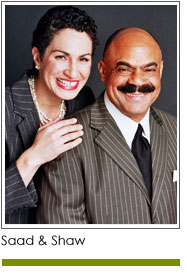 There is an ideal board in the consciousness of many nonprofit leaders. It often involves members who are engaged in governance and fundraising; who advocate for the organization; and serve as community ambassadors building relationships and partnerships. These ideal board members are well connected with time to spare. They magically appear, need no support or attention, and easily attract others of like-mind.
There is an ideal board in the consciousness of many nonprofit leaders. It often involves members who are engaged in governance and fundraising; who advocate for the organization; and serve as community ambassadors building relationships and partnerships. These ideal board members are well connected with time to spare. They magically appear, need no support or attention, and easily attract others of like-mind.
In reality, too many nonprofit boards are far from this ideal. The directors who report to these boards are pulled in many directions, forced to “wear many hats,” and struggling with too much to do and too few resources. Building and sustaining an engaged board is another item on a never-ending to-do list. It’s one of many items that are moved to “next week.”
The dream of an ideal board co-exists with actions that will eventually de-energize even the most engaged board. While energizing your board will require time and attention, we can offer an easier alternative: five ways to de-energize your board. As you can imagine, many of these are easy to implement.
1. Fail to communicate. There are many ways to accomplish this. These include changing the date and time of the board meeting, and changing it often, with little notice. Present inaccurate data with information that is confusing with internal inconsistencies. Send materials to board members at the last minute. Send them by email with 10 different attachments that need to be opened individually.
2. Fail to resolve issues as they arise. Continue discussion on low-priority items for several months. Contribute to ongoing “issues” by being evasive and inaccessible. Don’t worry about distributing minutes and reports in a timely manner. Don’t proofread materials.
3. Ignore suggestions and offers of assistance provided by board members. Let them bring up their ideas meeting after meeting. Eventually they will stop. Prohibit staff from following up with board members, and actively discourage initiatives that board members want to organize independently.
4. Use the same agenda for each meeting: keep it full of reports from staff. Don’t allow time for board members to engage and provide input. Don’t let the board chair create the agenda, set meeting dates, or set goals for board involvement. Don’t meet with the chair in-between meetings.
5. Recruit community leaders and then ignore their capabilities and connections. Stay busy so you don’t have time to learn the resources and funding that board members can give, raise or attract. Fail to plan and then ask for help at the last minute when the timeframe is unrealistic and the chances of success are slim. Increase the likelihood of disillusionment by failing to define goals, roles and responsibilities. And when you do define these, do it on your own without consulting the board. Don’t collaborate.
These are five ways to ensure poor attendance, boring meetings, and a de-energized board. It doesn’t have to be this way, but you will have to do something to change the situation. Ideally you will take action with your board. Together you can reenergize.
Copyright 2017 – Mel and Pearl Shaw
Mel and Pearl Shaw are authors of four books on fundraising available on Amazon.com. For help growing your fundraising visit www.saadandshaw.com or call (901) 522-8727.














